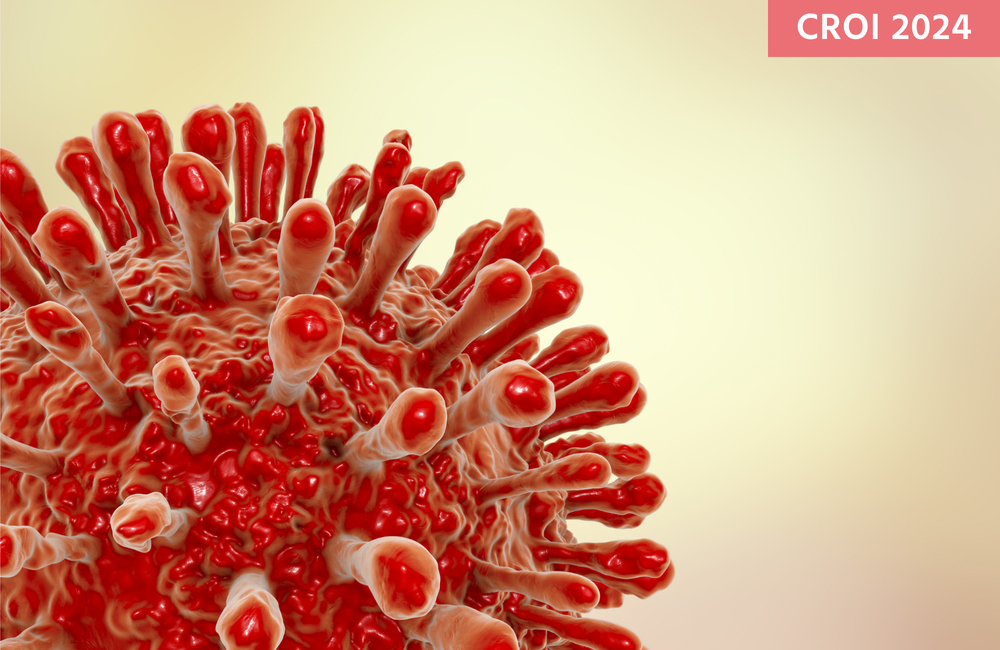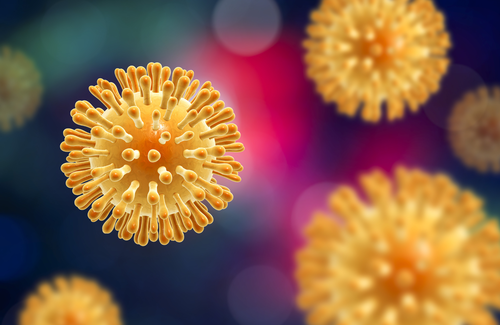
Last month’s Conference on Retroviruses and Opportunistic Infections (CROI 2024) included the latest information about potential drugs and treatments that might lead to a cure. Two presentations included promising data on TACK (targeted activation of cell kill). This is a property of some drugs in the non-nucleoside reverse transcriptase (NNRTI) family which induces a chain of events leading to the self-destruction of HIV-infected cells. TACK drugs could be used as powerful drugs for HIV treatment but could also contribute to a cure by killing off HIV-infected reservoir cells.
Background
The necessary condition for a cure of HIV is the elimination of all viable virus (i.e. virus capable of replication) from the body, or the containment of what remains so it never activates, even in the absence of antiretroviral therapy (ART). This is problematic because of the way HIV hides in a small number of long-lived ‘reservoir cells’ which stay inactive as long as ART is there to suppress it.
Elimination has been achieved in a handful of people through stem-cell (‘bone marrow’) transplants, which replace most or all of the immune system including the HIV-infected cells. However this treatment is too risky (and expensive) to be scaled up. Another handful of people appear to have achieved spontaneous self-cures for HIV, either after ART or without even having taken it. But we don’t know how to induce such a feat in other people.
The last decade of cure research has led to greater understanding of how HIV is able to remain in the body and shrug off immune responses that eliminate or neutralise other viruses. But it has not been able to identify the most promising pathway to a cure out of several being investigated. Direct excision of HIV from cells using genetic engineering, increasing the strength and precision of the immune response to HIV using antibodies and vaccines, or preventing HIV-infected cells from ever producing more virus are just three of them.
What TACK drugs do
A fourth possibility, more recently identified, is the discovery of drugs that turn the virus’s cell-killing machinery against itself. A couple of presentations at the conference provided the latest news on these.
Aidsmap first reported on TACK drugs last year. These drugs capitalise on an effect that has actually been known about for over a decade. In addition to disabling HIV’s ability to transcribe its viral RNA into DNA for insertion into human genome, some of the currently used drugs of the NNRTI family (including efavirenz and rilpivirine, but not nevirapine or doravirine), if given at very high doses, have a second property called Targeted Activation of Cell Kill (TACK).
TACK causes cells containing HIV genes to self-destruct prematurely, before they can produce viable new viral particles. TACK may be able to eliminate most of the HIV-infected cells by itself; if not, it has potential as a ‘killer’ in the strategy known as ‘kick and kill’’, which reactivates latent HIV-infected cells in the viral reservoir for detection and elimination.
TACK has potential because it does not rely on the body’s own immune response (or an immune response enhanced by immunotherapies) to do the cell killing. Merck have found candidate drugs that act as normal Reverse Transcriptase Inhibitors, but also have TACK properties at doses no larger than the NNRTI drugs we already have. They would not only stop infected cells from making new viruses but would kill them if they try, and would not kill uninfected cells.
Latest data
Dr Tracy Diamond, principal scientist of the pharmaceutical company Merck, announced new results from studies of Merck’s leading TACK drug, which has the investigatory name 0f Pyr01. Previously, Merck had only published the results of experiments testing the ability of this drug to suppress viral replication in the lab dish, where it performed better than efavirenz.
The first studies have now been conducted in mice. Lymphocytes from an HIV-negative human donor were infected with HIV in the lab dish and then injected into 30 mice whose immune systems had been altered so that they developed HIV infection like humans. Three weeks later 10 mice each were treated for one week either with a drug with TACK properties or with an NNRTI drug without TACK activity. The drugs were given in their food. The other 10 were an untreated control group.
By the end of the week’s treatment the mice’s HIV viral load had decreased by about five logs (100,000-fold) in the treated mice, regardless of which drug they were given; it increased 100-fold in the control group.
What was different was the extreme speed of viral load suppression in the mice given the TACK drug. By the third day of treatment the average viral load in the mice given the non-TACK drug had decreased tenfold and only one mouse was undetectable; in the TACK-treated mice the viral load had already fallen by four logs (10,000-fold) and seven out of 10 were virally undetectable. A difference was observable even at day one, after a single dose, where the viral load was unchanged in mice given the non-TACK drug but had already fallen 100-fold in mice on the TACK drug. Remarkably, two mice already had undetectable viral loads.
The experiment was repeated in another set of mice for only two days/doses, and after a single dose the viral load had decreased fivefold, and after two doses twentyfold, in the mice on the TACK drug. This compared with no change on day one and a twofold decline on day two in mice on the non-TACK drug.
As well as viral loads in blood plasma, intracellular HIV RNA levels (indicating productive infection) were measured by PCR in lymphocytes biopsied from the mice’s spleens. After one dose, about 1% of spleen cells were positive for HIV RNA in control animals, 0.8% in the mice given the non-TACK drug and below 0.2% in mice given the TACK drug. By day two the proportion of RNA-positive cells was essentially unchanged in the control group, was about 0.25% with the non-TACK drug and was less than 0.1% with the TACK drug. Similar declines were seen using other cell-counting techniques such as flow cytometry.
This experiment confirms that drugs with significant TACK activity are extremely fast-acting and potent antivirals when used as ART, and that their action is not simply due to their inhibition of reverse transcriptase but also due to direct cell death. (Previous experiments showing that the TACK action is annulled if the drugs are given alongside an HIV protease inhibitor such as lopinavir show that the premature activation of HIV protease is the mode of action).
Researchers now need to, firstly, confirm that TACK drugs are safe and effective in humans, especially as safety is a special concern in any drug with cytotoxic (cell-killing) effects. Even more importantly, scientists don’t yet know whether enough quiescent reservoir cells can be activated and then targeted by TACK drugs to induce a permanent and effective reduction in the HIV reservoir.
Other cellular self-destruct drugs
There may be other compounds, however, that could work alongside TACK. Aidsmap has already reported on BH3 mimetics, another class of drugs that could selectively kill off HIV-infected cells, by a completely different mechanism.
Just before Tracy Diamond’s talk, however, there was a presentation by Professor Liang Shan of Washington University in St Louis, whose lab was instrumental in investigating the TACK mechanism.
He commented that TACK drugs held out a lot of promise because they targeted essential HIV enzymes that the virus would find it hard to change. Their mode of action mirrored that of natural detectors of disordered cellular DNA that kill off infected cells and which, in fact, cause much of the catastrophic death of T-cells seen in early HIV infection.
Investigating TACK has also answered a mystery associated with immunodeficiency viruses. A few monkey species exclusive to Africa, such as the green monkey and the sooty mangabey, seem completely immune to the effects of the monkey immunodeficiency virus SIV. They tolerate high viral loads with no damage to their immune systems and SIV has become a harmless endemic virus in them, with 80% of animals infected. In contrast Asian species such as the rhesus macaque succumb at least as fast to SIV as humans to HIV.
It was found that the African species have a mutated form of a protein called CARD (Caspase-Recruitment Domain). CARD is a ubiquitous intermediary protein that is activated by the TACK-driven premature activity of HIV protease and then organises the recruitment of caspase, the enzyme that actually causes the cellular self-destruction.
We’re a long way from modifying CARD directly as it’s such an essential protein, but Shan and colleagues discovered that another protein called DPP9 partially blocks the ability of TACK drugs to set CARD in motion.
So a DPP9 inhibitor such as the cancer drug talabostat might magnify the effect of TACK drugs. In experiments in mice, the relatively mild TACK activity of the NNRTI drug efavirenz and talabostat individually reduced the number of HIV-infected cells in mice by about 30%, but by 70% when both were given together. Similarly, in the lab dish, either drug halved HIV viral activity in cells taken from people with HIV, but halved it again when both were given together.
As with the NH3 mimetics, however, talabostat is an investigatory drug that’s only so far been tried in patients with advanced cancer, and safety trials will be needed before it can be tested in humans.
Diamond TL. From mechanisms to therapeutics: TACK molecules kill HIV-infected cells through inflammasome activation. Conference on Retroviruses and Opportunistic Infections, Denver, presentation 42, 2024.
Shan L. From Mechanisms to Therapeutics: Eliminating HIV-Infected Cells by the CARD8 Inflammasome. Conference on Retroviruses and Opportunistic Infections, Denver, presentation 41, 2024.

